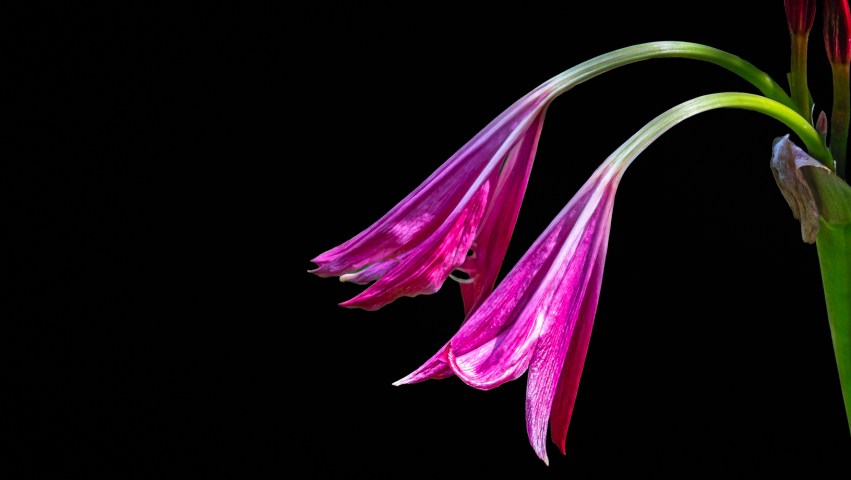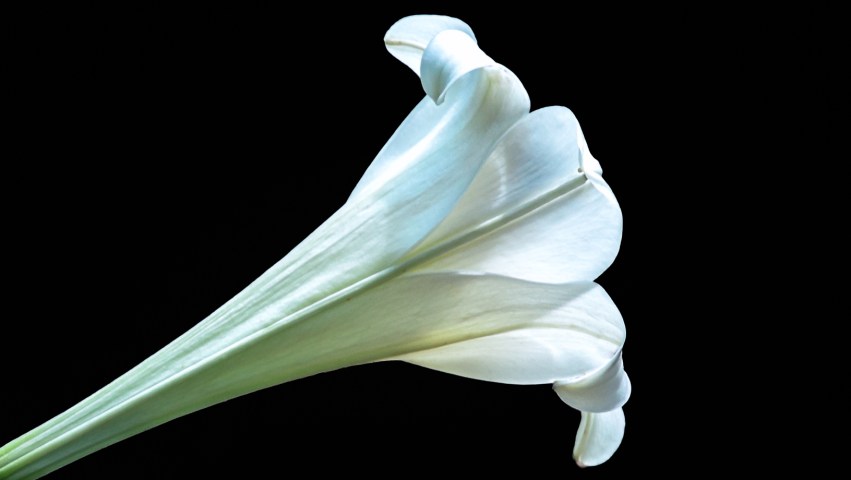From “Lily” in Flowers in History by Peter Coats:
“L. martagon (the word comes from the Turkish martagan, a special form of turban adopted by Sultan Muhammed 1) is sometimes thought… to be an English native; but the Turk’s Cap lily is more likely to have been brought by early travellers from Italy, Spain or Turkey….
“It is a tall graceful lily, with many small flowers in pyramidal clusters, each with reflexed petals, which give the individual flowers their likeness to a turban. In color the martagon is usually a rich freckled purple, an unusual mahogany red or waxy white.”
From “There Are Different Gardens” by Carl Sandburg in The Complete Poems of Carl Sandburg:
Flowers can be cousins of the stars.
The closing and speaking lips of the lily
And the warning of the fire and the dust —
They are in the gardens and the sky of stars.
Beyond the shots of the light of this sun
Are the little sprinkles, the little twinklers
Of suns to whose lips this lily never sent
A whisper from its closing and speaking lips.
Hello!
Last year when I learned that the Martagon Lilies featured in this post (and the next two) were commonly called Turk’s Cap Lilies (see, for example, Turk’s Cap (Martagon) Lilies (1 of 3), where I first discussed it), I took it for granted that “Turk’s Cap” and “Martagon” were interchangeable names for the same plant — which seemed perfectly reasonable until I found out that other lilies (like Lilium superbum) have also been doffed “Turk’s Cap.” This ambiguity — which is present in the Peter Coats quotation uptop — always bugged me a bit, mainly because I try to get better at correctly identifying the plants and flowers I photograph, even while getting help from sources like PlantNet. So this year I did a little more digging around, to see if I could clear up my name fog over “Turk’s Cap.”
In the book Lilies: Beautiful Varieties for Home and Garden, author Naomi Slade explains that “the classification of lilies is… a bit of a headache.” She continues:
“Generally speaking, [lilies] are placed in one of nine divisions depending on their parentage, then assigned a series of letters that are designed to indicate the shape and habit of the flowers.”
She then describes the nine divisions, pointing out that three of these divisions — Division 2, Division 3, and Division 4 — include lilies with flowers in the Turk’s Cap shape. I was tempted to conclude that only these three divisions contained Turk’s Caps, but pretty quickly discovered that lilies in other divisions — such as Lilium cernuum in Division 5 and Lilium michiganense in Division 6 — bloom in Turk’s Cap shapes too. Ah, well, now I understand why Slade got a headache; but I think the best way to think about this is that “Turk’s Cap” is more properly thought of not as the name of a flower, but as the characteristic shape of some flowers, and what any of us know to be a “Turk’s Cap Lily” is more of a colloquialism, an informal way of referring to specific lilies that may also be localized to where you live (or where you see the lilies).
Slade’s description of the lily divisions is too long to quote here, but Wikipedia also describes the nine divisions (closely mirroring Slade’s explanation) at Lilium: Classification of garden forms — where the photos for lilies in each division are very helpful for visualizing how the similarities among variants get them classified as they are. For my purposes, I think I’ll get in the habit of trying to figure out what lily variant I’ve actually photographed when its shape is a Turk’s Cap, and I landed on Martagon for these lilies because of their dominant purple-red colors; the presence of dark purple (nearly black) spots on some of the flower petals; and the smaller size of the individual flower blooms. Further (though you can’t tell from the closeup photos below) the plant itself stood nearly six feet tall with several dozen blooming stems — both characteristics of (though not exclusive to) Martagon Lilies.
Thanks for reading and taking a look!









































































